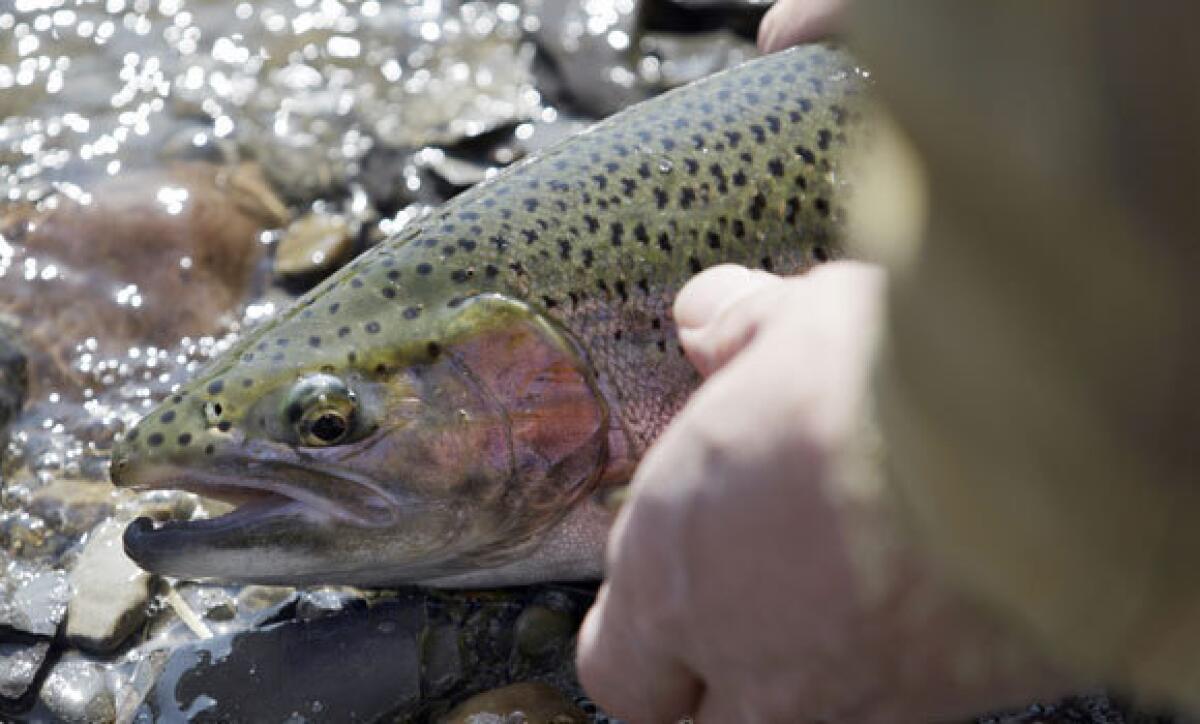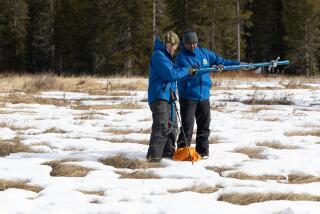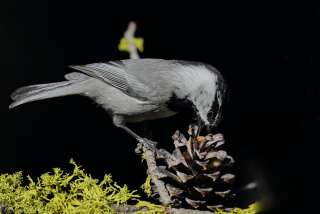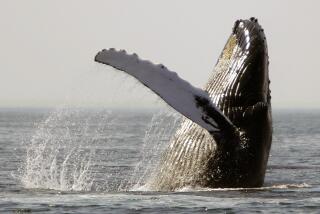Hunters, anglers report warming winters bad for wildlife

The exceptionally warm winter of 2011-12 might be a nice respite for everyone, but the rising average winter temperatures are not a good thing for North American wildlife. In a new report released this week by the National Wildlife Federation, fishermen, hunters and other sportspersons discuss how warmer winters are changing the behavior of wildlife and even threatening the survival of certain species.
The report, “On Thin Ice: Warmer Winters Put America’s Hunting and Fishing Heritage at Risk,” showcases the effects of climate change on several key species, including trout, waterfowl and moose, as observed by people who are presented as “America’s first conservationists”: anglers and hunters.
The relationship between that community and environmentalists has been testy over the years, but the real effects of climate change are one place they find common ground. And, apparently, a lot of it.
“We work with a lot of sportsmen and -women across the nation, and we constantly hear back from them that they’re seeing the effects of climate change on the ground,” says Joe Mendelson, policy director for the Climate and Energy program at the National Wildlife Federation. “The changes might seem subtle to to some, but they see them in their outdoor pursuits maybe more readily than others.”
Fishermen came out in large numbers last year to lobby Congress and the Environmental Protection Agencyto regulate mercury emissions from power plants, as coal-fired plants disgorge a form of the poison that settles in rivers and affects fish eaten out of those rivers. The solution to global climate change is certainly more daunting, but those quoted in the report are making the connection to regulating the emissions of CO2 and other global warming gases from multiple sources.
Since the 1970s, says the report, average winter temps have gone up 1-2 degrees Fahrenheit in the Pacific Northwest and as much as 4 degrees in the Northeast. The season is as much as two weeks shorter than it used to be, and there’s less snow on average.
The effects on ice fishing are pretty obvious but less so elsewhere. For example, moose in Maine, New Hampshire and Minnesota are dying in record numbers, and the culprit is winter ticks. A moose might ordinarily carry 30,000 ticks; normally, cold weather kills off or controls the parasites. A study cited in the report says that warm winters might increase that number to 160,000 ticks. Enough to kill even a moose.
Retired wildlife biologist Eric Orff, who now serves on New Hampshire’s Fish and Game Commission, pinpoints the trouble and the thrust of this report when he says in it: “I spent three decades restoring fish and wildlife to New Hampshire, and I don’t want to see the progress we made reversed. Climate change is is a subject I’m passionate about – and I’m trying to get hunters on board.”
The report also highlights effects on other species: trout are scrambling to find cooler water – or enough water -- as river temps rise and snowpacks diminish; waterfowl such as geese and ducks are shortening their migrations, or sometimes not migrating at all; snowshoe hare populations have plummeted.
Mendelson says the response from sportsmen’s groups, including one called Sportmen for Responsible Energy Development, has been heartening. “This winter, we’ve seen basically the fourth warmest winter on record, they’re seeing the effects double-time. They want to have a voice, and say that cutting carbon pollution is something that needs to be done for the hunting and angling community,” he adds.
RELATED:
Film “Who Bombed Judi Bari” shows at Laemmle Monica
Obama limits CO2 emissions from new power plants
Clouded readings of EPA study of Dimock water, featured in ‘Gasland’






